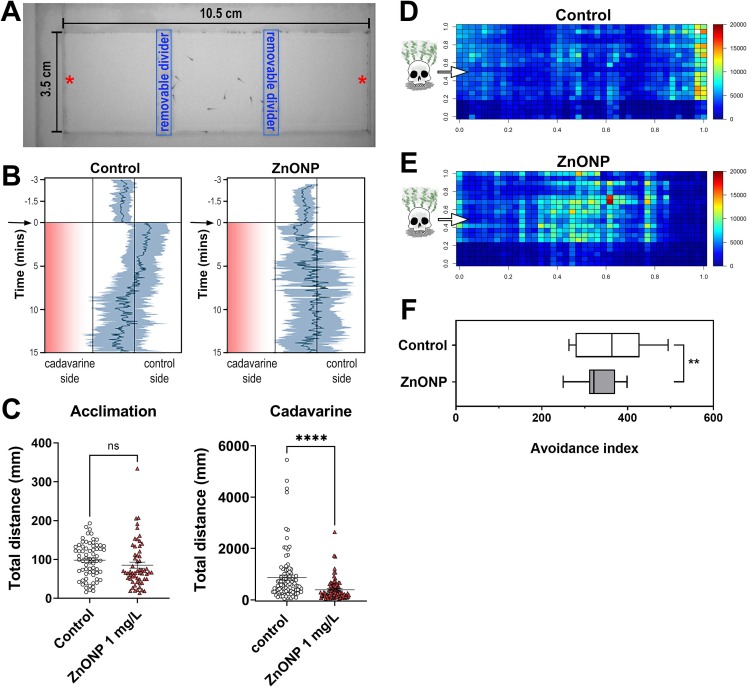Fig. 6 ZnONP exposure impairs olfaction-mediated avoidance behaviour. (A) Illustration of the experimental arena. A fear-related aversive odorant, cadaverine, was administrated at the edge of either side of the arena (red asterisks). (B) Representative data showing the mean (dark grey line) or standard deviation (shading) positions of 10 individuals of control or 1 mg/L ZnONP exposed 5 dpf EpRE:mCherry larvae plotted along the horizontal axis of the experimental arena every two seconds. Cadaverine was applied at time −5 on the left edge and equilibrated for 5 min within the left compartment. The dividers were then removed at time 0 (indicated by arrows) to expose the experimental animals to the cadaverine gradient (red gradient). (C) Dot plots showing total distance travelling during acclimation (left panel) or after the cadavarine exposed period (right panel). Data of total 60–99 fish from 6 to 10 groups are shown. Not significant, ns; p < 0.0001, **** by t-test. (D and E) Colour-coded heat maps indicating the sum of durations for the presence of individual larvae in each square area. The heat maps are plotted from combined data from four independent groups (each 10 fish) of control (top) and ZnONP (1 mg/L)-exposed larvae (bottom). The site of cadavarine administration is indicated with white arrows on the left. (F) The box plots for the means of centroid distance from the site of cadaverine administration over the 10 min acquisition time are shown as “Avoidance index”. Data are from nine groups for each condition including the groups with cadaverine administration at either left or right site. ** p < 0.01 with mixed effect generalised linear model in R. (For interpretation of the references to colour in this figure legend, the reader is referred to the web version of this article.)
Image
Figure Caption
Acknowledgments
This image is the copyrighted work of the attributed author or publisher, and
ZFIN has permission only to display this image to its users.
Additional permissions should be obtained from the applicable author or publisher of the image.
Full text @ Environ. Int.

